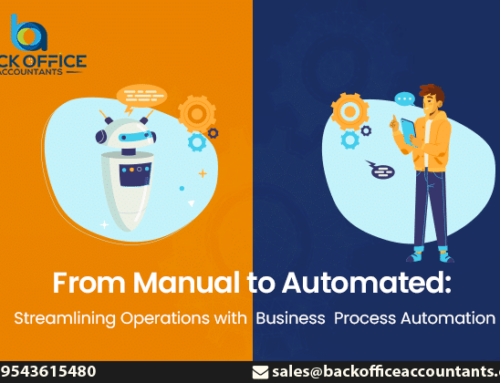Journal entries for small businesses are the most important, in fact, the first step of any accounting cycle. A fundamental building block of bookkeeping activities, they record the financial transactions that represent the entire business’s financial activities in chronological order.
By capturing transactions in the order they occur, journal entries provide a crystal-clear timeline of financial events with detailed descriptions for easy understanding. As the source of data used to create financial statements, journal entries become essential for financial analysis, audits, and informed decision-making.
Yet Most Small Businesses Ignore Journal Recording
Despite their fundamental role in bookkeeping and accounting, the majority of businesses miss or take journal entries lightly. This mistake often leads to tax-time complications, inaccurate financial statements, and hindered decision-making.
At Back Office Accountants, we often work with small, medium, and large businesses who, over time, realize their mistake and seek assistance for journal entries, reconciliation services, and financial statement preparations. In almost all cases, inaccurate journal entries seem to be the root cause of all the problems they quickly want to rectify.
If you’re a small business that wants to build a strong financial and accounting foundation, it’s exceptionally important to focus on creating seamless journal entries as the first step. In this blog, we want to help small businesses improve their journal recording.
We’ll go through the common problems that lead to inaccurate journal entries, so you don’t commit them or can make necessary corrections along the way. Then, we’ll talk about simple and practical ways to simplify journal recording. Read on:
A Simple & Practical Guide to Journal Entries for Small Businesses
In the case of accounting software, journal entries are entered on the general ledger, where they sit as subsidiary ledgers in manual accounting. Accounting software will provide greater benefits along with summarizing the records. But whether you are doing it manually or with accounting software, the steps remain the same, which are:
Identify the Accounts Affected by the Transaction
Identifying the accounts that will be affected by the transaction is the first thing that must be done before starting your journal entry. If you have received payments, made purchases, or recorded sales, you need to categorize them into their respective accounts.
After you record a transaction, you can determine which accounts it affects. For example, if you sell a product, you impact the Sales Revenue account, and if the sale is on credit, you also affect the Accounts Receivable account. In case you receive cash for a service, you would be affecting the Cash account and the Service Revenue account.
A chart of accounts can also help you understand the correct accounts for each transaction. Once the respective accounts are identified, you can write the journal entry.
Assign Account Types:
Assets, liabilities, revenue, expenses, and capital/owner’s equity are the five categories that journal entries fall into.
Assets include cash, accounts receivable, bank accounts, and even items like laptops. Liabilities include accounts payable, loans, and debts. Expenses cover operating costs like office supplies, rent, and payroll. Capital/owner’s equity involves the financial interest in the business. Revenue, obviously, includes the money you receive from your services or products.
Once you understand the classification, you can use standard accounting principles to determine whether to debit or credit each account.
Create your journal entry
Finally, add the journal entry to the accounting software or physical ledger. This detail includes the date, account name, account number, and debit and credit amounts.
“We advise accounting professionals to be consistent with a standardized format for all entries, using clear descriptions for each and every transaction. Regularly check your entries for accuracy of the accounts. We usually recommend that every business use accounting software that suits them to streamline and improve accuracy,” say some of our accounting professionals at Back Office Accountants.
Even though recording journals is the basic building block of accounting and bookkeeping processes, most small businesses fall short of ensuring accurate journal entries. Lack of accounting expertise, time constraints, resource limitations, and the absence of the right accounting tools are some of the major reasons why these building blocks become feeble, leading to disarray in accounting and bookkeeping.
If you are a small business that aims to improve journal recording but is facing problems and looking for assistance, our accounting professionals at Back Office Accountants can help. As a trusted remote accounting firm, we are an accounting partner for small, medium, and large businesses, powering their accounting departments with our specialist bookkeeping and accounting services. Powered by veteran accounting professionals and cutting-edge accounting tools, we provide a robust accounting and financial foundation for your business. Learn more about our services here: https://www.backofficeaccountants.com/







